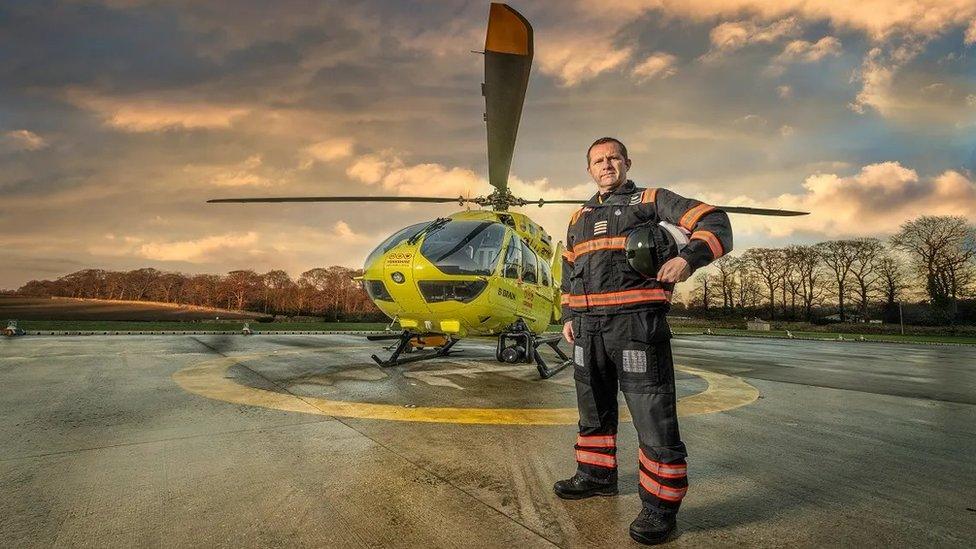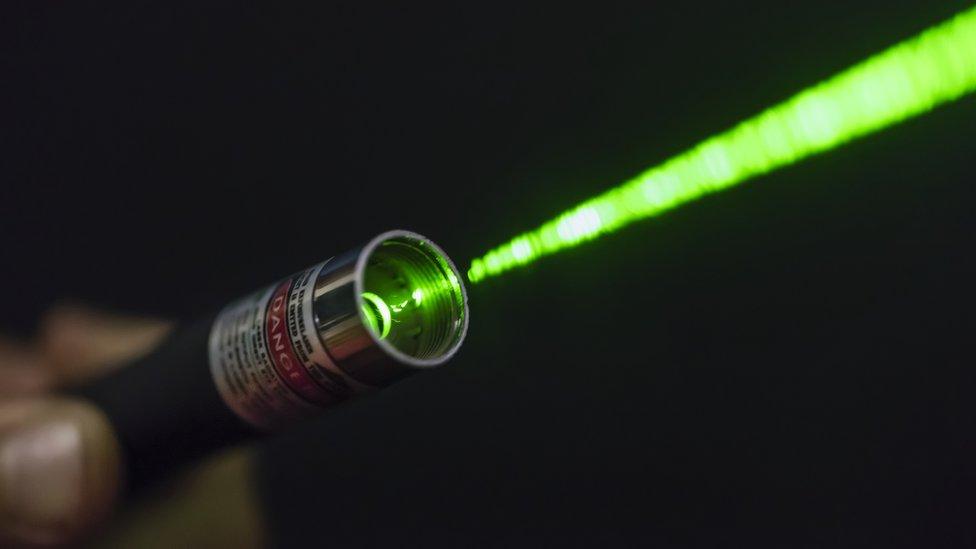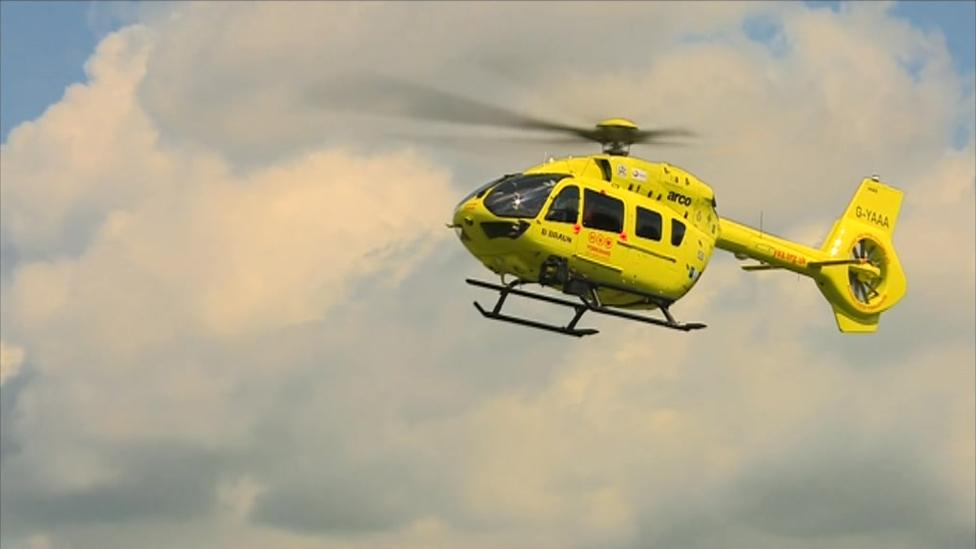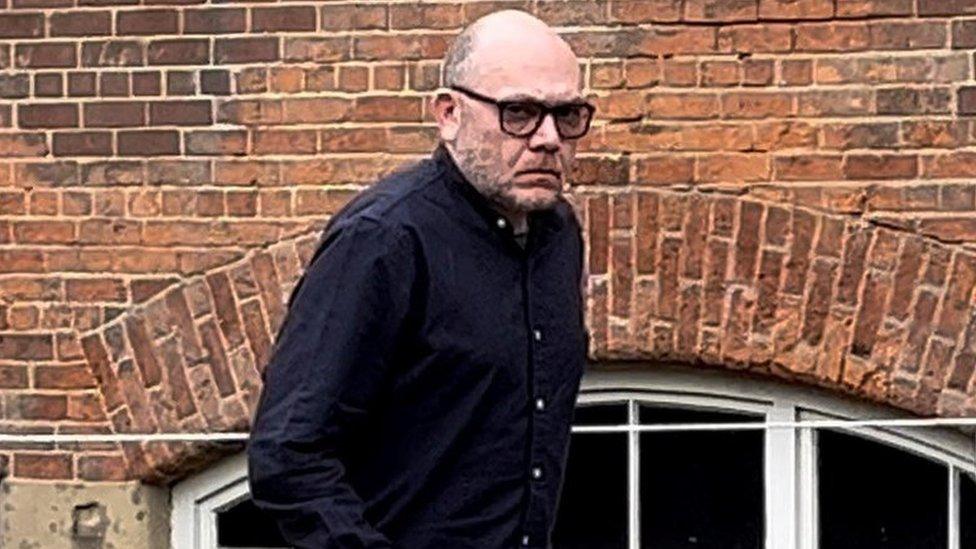Yorkshire Air Ambulance crew member's eye burned by laser
- Published

Yorkshire Air Ambulance chief pilot Owen McTeggart said lasers had potentially life-changing consequences for pilots
An air ambulance crew member suffered an eye injury after a laser was shone at his helicopter in an act of "senseless stupidity".
Technical crew member Alex Clark's cornea was burnt on Friday evening, the Yorkshire Air Ambulance (YAA) said.
The charity described it as the latest in a "disturbing rapid escalation" of laser attacks on life-saving crews.
West Yorkshire Police said they were working to identify the specific location and find those responsible.
Anyone caught shining a laser at an aircraft faces an unlimited fine and up to five years in jail, external.
Mr Clark was injured during a transit flight back to the service's Nostell airbase, near Wakefield.
The charity said that he was on the path to full recovery but "his injury poignantly emphasises the very real threats faced by YAA's crew members".

The charity said laser attacks were massive distraction for crew during a critical stage of flight
It follows two separate incidents on crews earlier this month while they attended callouts.
A YAA spokesperson said: "These attacks, characterised by their intermittent and seemingly random nature, have left the YAA searching for answers, as there appears to be no discernible pattern or motive behind these acts of senseless stupidity."
YAA chief pilot Owen McTeggart said crews were unable to land if they encountered a laser attack while trying to bring the helicopter down.
"The injured person on the ground doesn't get the care that we are there to provide."
Mr McTeggart said: "I'm sure most people who point a laser at a helicopter think it's just a laugh and no harm is caused.
"But it can, in some cases, have life-changing consequences for the pilot, the crew, and if it's an air ambulance under threat, the patient in the back whose life they are trying to save."

Follow BBC Yorkshire on Facebook, external, X (formerly Twitter), external and Instagram, external. Send your story ideas to yorkslincs.news@bbc.co.uk, external.
Related topics
- Published21 June 2023

- Published17 May 2023
